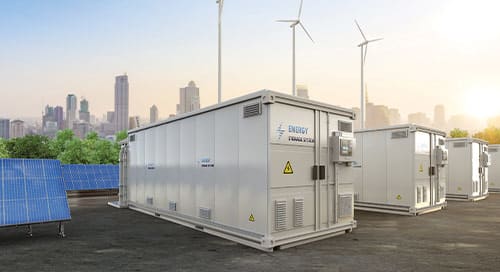Energy
Best practices for using simulation in the energy industry.
-
Webinar Series: Exploring the Role of Simulation in Grid Modernization
Explore cutting-edge simulation solutions for electrical enclosures, holistic energy infrastructure, and sustainable energy storage.
Read Article
-
 38:38
38:38
Leveraging Simulation for BESS & Data Center Sites
Learn how to reduce risk, address thermal management challenges, and optimize system design for maximum efficiency and reliability, with simulation technology, combined with external aerodynamic analy
Watch Video
-
 28:16
28:16
Engineering Energy Efficiency
Discover how multi-physics simulation (CFD, FEA, EMAG) helps engineers and decision-makers optimize performance, cut costs, and accelerate innovation across the entire energy value chain. Learn from r
Watch Video
-
Have Questions?
Just Ask.
-
Blasting Rocks in Space: Asteroids, Rocky, and the Power of Fast Simulation
Rocky natively handles particle breakage through models like Ab-T10, which treats each particle as a single breakable unit that shatters when it absorbs enough impact energy.
Read Article
-
 33:30
33:30
How Simulation Simplifies the Design of Electrical Enclosures
Explore how simulation through CFD, EMAG, and FEA analyses, can streamline the design and configuration of electrical enclosures for thermal resilience and compatibility across diverse environments.
Watch Video
-
Energy Company Case Study
View Brochure
-
Advancements in CFD for Battery Energy Storage Systems
Rand SIM experts can help you dramatically reduce the chance of costly rework on built structures by testing a battery energy storage system design early in the CFD process with Ansys Fluent.
View Brochure
-
Rand Simulation Leverages CFD Analysis to Identify and Eliminate Risks in Battery Energy Storage Systems
Dedicated Rand Simulation experts are advancing the industry by hosting a series of industry webcasts and speaking at events including the SDSIC Spring Event in Chattanooga, Tennessee
Read Article
-
Electric City BESS Site Analysis
View Brochure
-
Slide Deck: BESS & Data Centers Integration Webinar
View Brochure
-
 1:39
1:39
Battery Energy Storage Systems Design
Computational Fluid Dynamics (CFD) enables the testing of battery energy storage systems design early in the design process
Watch Video
-
Rand Simulation Enables Utilities to Predict Design Flaws for Battery Energy Storage Systems
As an Ansys Elite Partner, Rand Simulation helps utilities modernize their grids by designing proven cooling and ventilation systems based on rigorous CFD analysis.
Read Article
-
Ansys Sustainability Solutions Overview
Sustainability has become as a powerful driving force reshaping the business landscape over the past few years
View Brochure
-
Ansys Sustainability Solutions
Through simulation, engineers can explore different materials, manufacturing processes, and design configurations, enabling them to make informed decisions that lead to more eco-friendly products.
Read Article
-
Five Steps to Eco Design
Five Steps to Eco Design: Improving the Environmental Performance of Products Through Material-led Design
View Brochure
-
Loading More...











